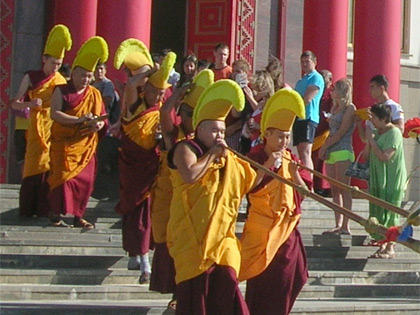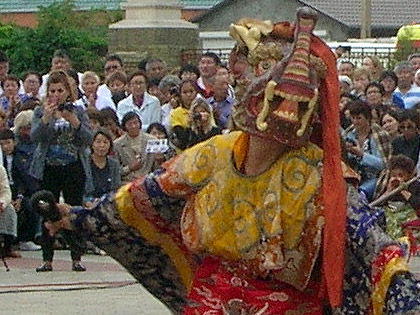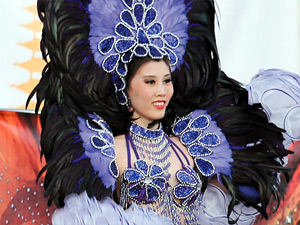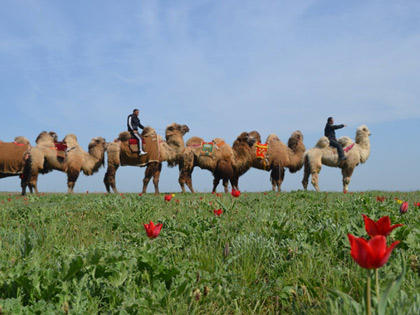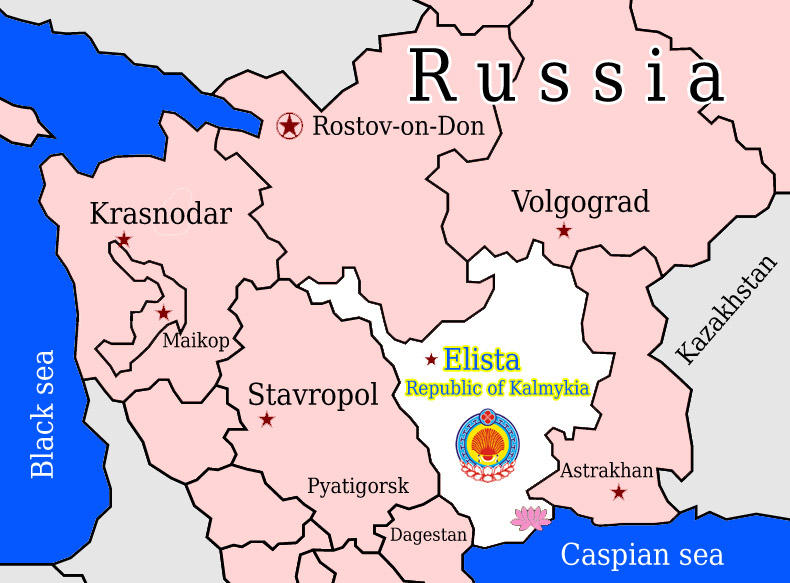Creative summary of FIDE Grand Prix tournament in Elista
GM Sanan Syugirov and GM Andrey Zontakh give their comments on the tournament in Elista.
The tournament is over, let us strike sport, creative and theoretical balance.
First and foremost I would like to distinguish the tournament winners. Dmitry Jakovenko will be remembered for his amazing tenacity in the defence and delicate end-game technique.
Teimur Radjabov, a bedivere of King’s Indian defence, – confident game with Black. Alexander Grischuk – for his strong-willed character, replying with three wins in a row for the defeat.
Vugar Gashimov almost scraped the victory and nearly achieved the first place. His upheaval up the chess hierarchy was the discovery of the past year. In the most important game with Jakovenko he was close to victory, but … the defence was solid.
Five participants scored 50& points and occupied the mid section of the final table. Very good impression was made by Rustam Kasimdzhanov’s performance, in the final stage especially. He was a bit slow in the beginning and couldn’t therefore interfere in the struggle for the first place, though the creative part of his games is impressing.
Peter Leko caught a cold and performed worse than his usually. Etenne Bacrot and Shakhriyar Mamedyarov played without spirit though both of them had one bright victory each.
Our Chinese guest Wang Yue showed a very tight and reliable game once again, as in the previous tournaments, but failed to fight for the prizes.
Ivan Cheparinov’s combative style appeals to every chess-lover without exceptions, thus making him one of the heroes of the tournament. His games always attract great attention, short drawn games are practically impossible in his style. If he plays in a more flexible, more stable way, we can expect very high achievements from him.
Pavel Eljanov and Evgeny Alekseev’s performance at the tournament was not very successful. Absence of elaborate target-specific preparation must be the cause of this, because they were shortlisted at the very last moment.
Vladimir Akopian and Ernesto Inarkiev ended up at the bottom of the tournament table. Vladimir must have exhausted all the resources at Dresden Olympiad. As for Ernesto, he evidently failed the final part being not able to stand the strain of the battle. Well, we shall wish the participants success in the New year and turn our attention to the creative summary of the tournament.
ESTETHICS
I must say that the number of interesting and memorable games was rather large for such an evenly matched line-up tournament. I will distinguish three the most memorable parts of the games, that have definitely been the adorned the tournament. I will begin with the wonderful strike by Etienne Bacrot that crowned the White attack.
Bacrot – Leko (Round 4)
The strongest piece sacrifice follows (no matter it is not a complex one this time), which always appeals to chess audience.
31. Qh7! 1:0
Cheparinov – Alekseev (Round 8
33. Qxf7! Rxf 34.Rxf7 Kh8 35. Rd7 1:0
And the last but not the least, the fantastic canvas by Mamedyarov.
Mamedyarov – Eljanov (Round 10)
20. Nxg5 and White won after numerous adventures.
Out of the opening discoveries are as follows:
the solid enhancement (22. Ne4!) in the Dragon variant and rapid White attack, Radjabov-Kasimdzhanov game (Round 3);
The positional quality sacrifice 15…Rxd5! In Kasimdzhanov-Alekseev game (Round 4, Nimzo-Indian defence);
Eljanov-Akopian theoretical duel in Anti-Meran (Round 5)
Speaking about the examples of chess technique, realization of the minimal advantage, powerful endings, we should turn our attention to Jakovenko-Wang Yue game (Round 1), Wang Yue-Eljanov (Round 4), Cheparinov-Akopian (Round 10), Inarkiev-Kasimdzhanov (Round 11).
I’d like to distinguish absorbing battle-like games by Kasimdzhanov-Akopian (Round 8), Jakovenko-Kasimdzhanov (Round 9), Gashimov-Jakvenko (Round 11), Cheparinov-Bacrot (Round 13).
STATISTICS
Now let’s proceed to some statistics.
The tournament was a sharp hardline battle. A relatively high percent of drawn games could be accounted for the density of the line-up, qualifying nature of the tournament and players performance. Besides, we should note that the percent of quick drawn games and avoided battles was low, we can say, insignificant.
The longest game was Eljanov-Cheparinov one, White defeated the opponent. It was played in Round 7 and its lngth was 125 moves.
The shortest were Bacrot-Kasimdzhanov (Round 1) and Bacrot-Grischuk (Round 12) games. Both ended in a draw and lasted 14 moves only.
The fastest vectory was achieved by Black in Inarkiev-Cheparinov game (Round 5). It took them only 29 moves.
There were 4 quick drawn games, i.e. games with the draw before the 20th move.
16 games ended by the 30th move.
The most decisive round was Round 10: 5 non-draw games.
This is at the same time the most convincing victory of White – 5:0! The most successful for Black was Round 11, where they squeezed through the victory.
The most peaceful rounds – 11, 12 and 13. On tournament finish the participants were a little tired. In round 11 and 12 the winner was Kasimdzhanov and the last victory was carried off by Eljanov.
Decisive games total – 32 (91 played) So the percentage is 35% So the advantage of White over Black is quite impressive – 25:7
To compare I’m putting the results of other tournaments of 2008.
Grand Prix Series tournaments Baku – 42% (38 out of 91),
Sochi – 37% (34 out of 91)
Other super tournaments: Wijk aan Zee – 34% (31 out of 91), Linares – 45% (25 out of 56), Sophia – 57% (17 out of 30)
Foros – 45% (30 out of 66), Dortmund – 39% (11 out of 28), Poikovski – 31% (14 out of 45), Moscow – 40% (18 out of 45), Bilbao – 43% (13 out of 30), Nanjing – 40% (12 out of 30)
The most popular opening variation was the Sicilian. It was used in 18 games, White won 5 games and lost only one. Black suffered in twos unreciprocated defeats in actual variations ‘Najdorf’ and ‘Dragon’.
For 17 times Black used Ruy Lopez to defend. In this variant White’s progress is 4:2. They managed to break through the famous ‘Berlin Wall’
All counterattack Marshall ended in a draw confirming its high status. Alekseev stood up for Breyer gaining 1,5 out of 3.
Out of seven Petroffs in four games Gashimov played Black. He draw three games and lost the other. Another three games also ended in a draw.
The Caro-Kann was used 4 times, White’s advantage is 3:1
In closed openings I must point out the popularity of Slav variations.
This opening was used in 18 games. Black didn’t score and lost 6 times. In two of them was used the unpretentious variant 4.e3, in three games – 4…dxc4 5.a4 Bf5. White succeeded both in 6.e3 and 6Ne5 and 6.Nh4 and one time a sharp Anti-meran with 7.g4.
Two battling draws were played in the Anti-Moscow variant.
The combination of the Queen’s Indian Defense and Nimzo-Indian Black have chosen in 9 games. The result is 2:1 in White’s favor with 6 draws.
Another draw occurred in Catalan.
King’s Indian Defense was used in 5 matches. White posess minimal advantage: Radjabov responded once on two Cheparinov’s defeats.
Two draws were recorded in Gruenfeld Defense.
The best White players are Jakovenko, Gashimov (5 out of 7) and Grischuk (4,5 out of 6)
The best Black player is Radjabov (3,5 out of 6)
The only undefeated participant is Jakovenko.
The only one who hasn’t won is Akopian.
Grischuk and Radjabov have won more matches than other players – 4 each.
Jakovenko, Gashimov, Kasimdzhanov, Cheparinov and Eljanov – 3 each.
The most peaceful are Bacrot and Mamedyarov (11 draws each).
The most uncompromising are Eljanov and Cheparinov (8 and 7 decisive games respectively).
Grischuk got the longest winning series – 3 games in a row (round 6-8).
Two day-offs divided the tournament into three parts. The start (rounds 1-5) was won by Radjabov and Gashimov (3,5 out of 5).In the middle (rounds 6-9) Grischuk was notable with 3,5 out of 4 result. The finishing period (rounds 10-13) is won by Kasimdzhanov.
Jakovenko passed the tournament distance smoothly and gained victories in each of the tournament’s parts.
Kalmykia, Elista
